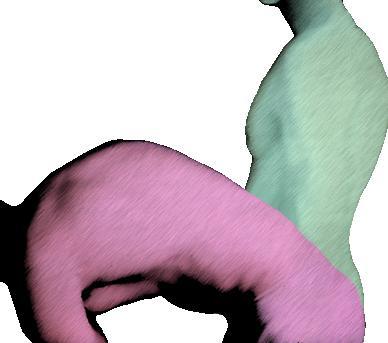
It seems as though every day there is another interesting story coming out of China, involving both 3D printing and advanced surgical procedures. While laws in the United States are more restrictive, preventing the media from obtaining very much information on individual surgeries, China’s media seems to have been jumping all over the various uses of 3D printing within the operating room. This latest case is quite an extraordinary one.
A 52-year old woman, named Mrs. Wong had been living with a spinal deformity her entire life. Born with a form of scoliosis, which her family did not have the money to treat, she suffered with the condition for over half a century. While she didn’t really experience much physical pain until just recently, she did have to face the daily mockery of being called “Hunchback Lui”. Over the years, the spinal deformity manifested into an embarrassing hunchback. Recently she had begun experiencing severe back pain and decided it was time to visit the doctor.
Wong chose to go to First Affiliated Hospital of Nanjing Medical University, as it is a well respected medical center with very experienced surgeons.
Because of the huge curvature of her spine, Ms. Wong stood at just 4′
11″ tall at the time of her evaluation. It was discovered that her 12
vertebrae were 
severely out of place, forming a hump and creating much discomfort. Doctors said that if she wasn’t treated soon, she would probably eventually suffer a severe spinal cord injury, and perhaps even paralysis.

severely out of place, forming a hump and creating much discomfort. Doctors said that if she wasn’t treated soon, she would probably eventually suffer a severe spinal cord injury, and perhaps even paralysis.
Surgeons decided that a pin needed to be implanted into Wong’s upper
thoracic spine, and it would be a very risky and challenging procedure
since a large number of blood vessels, and nerves resided in the area
the pin would be inserted into. A minor mistake could lead to the
paralysis of Wong. To help make this extremely difficult and risky
surgery a bit less challenging, the surgical team opted to create a 3D
printed model of Wong’s spine. Using a CT scanner and MRI data, they
were able to create a comprehensive virtual model of the spine, before
using a 3D printer to actually fabricate an exact replica. Using an
inkjet 3D printer, which uses a binding agent to harden layers of power,
one layer at a time, it took the team about 10 hours to print out the
medical model.
Typically, a surgery like this would require surgeons to make a 10cm incision in the patient and then attempt to place the pin several times before ultimately finding the exact location. Surgery would take a very long time, and recovery afterwards would be very painful and difficult. Thanks to this 3D printed model though, surgeons knew exactly where the pin needed to be placed, after
performing several practice tests on the replica. Surgical time was cut in half, a much smaller incision was required and the inherent risk was highly reduced.

The surgery ended up going extremely well for Wong, and she even grew an additional 4 cm in height. Her recovery is expected to go much better than it would have with a more traditional surgical approach. Surgeons at the hospital hope to advance their use of 3D printing even further by eventually being able to 3D print actual bone that will be inserted into the human body. They are not quite there yet, but hopefully will be within the next two to three years.
Source: 3dprint, 8th June 2015

No comments:
Post a Comment